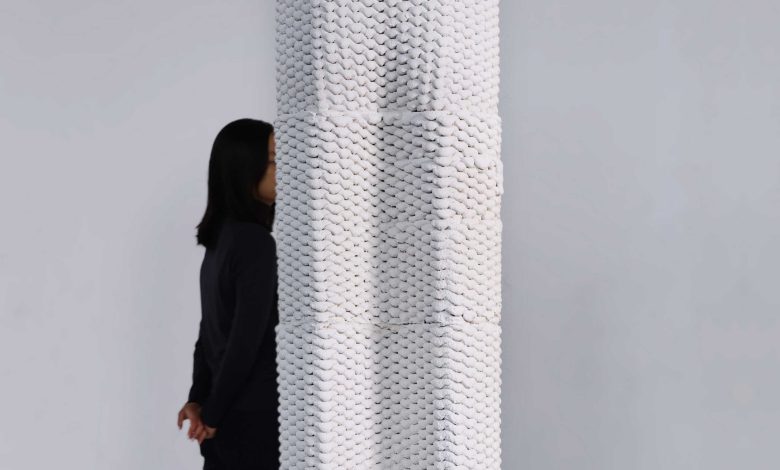The Airlements project utilizes cement-free mineral foams derived from recycled industrial waste, including fly ash from industrial blast furnaces
ETH Zurich is pioneering the future of sustainable construction with one of its innovations from earlier this year: lightweight, insulating building components produced by 3D printing. Spearheaded by doctoral researcher Patrick Bedarf from Professor Benjamin Dillenburger’s Digital Building Technologies group, the project, known as Airlements, utilizes cement-free mineral foams derived from recycled industrial waste, including fly ash from industrial blast furnaces. This technology promises to reduce heating and cooling costs and to revolutionize the efficiency of construction material usage.
The Airlements prototypes, which consist of individual parts easily assembled into structures like wall cornerpieces, embody the principles of sustainability and efficiency. Bedarf’s research, part of his doctoral thesis, focused on creating these elements, especially in complex shapes, to minimize material usage. The key innovation lies in the 3D printing process, which significantly reduces material wastage and CO2 emissions compared to traditional construction methods. This process eliminates the need for time-consuming and partially reusable formwork, a common challenge in producing complex geometrical shapes.
Combining 3D printing with robotics, the project enables the cost-effective production of bespoke building parts. “Without automation, traditional construction methods that save on materials are very time-consuming and expensive,” said Bedarf. This novel approach allows for rapid prototyping; each component can be printed in less than an hour and then undergoes a one-week hardening process in a controlled environment – ensuring material integrity and durability.
The practical application of Airlements includes lightweight parts that can be easily transported and assembled on-site. Initially, Bedarf experimented with concrete to reinforce the parts but successfully transitioned to using solely the innovative foam. The components can be used as insulating parts for internal and external walls and have the potential for load-bearing applications.
Looking to the future, Bedarf, in collaboration with FenX – an ETH spin-off that produces sustainable insulation material using recycled industrial waste – plans to further develop Airlements, focusing on load-bearing capacity and insulation properties. This initiative aligns with his teaching in the bachelor’s course “Computational Design I&II” at ETH Zurich.
Airlements not only represent a significant stride in sustainable construction but also a model for future innovations in the field. With its focus on reduced energy consumption, minimal waste production, and complete recyclability, Airlements stands at the forefront of environmentally friendly construction technology.
Subscribe to AM Chronicle Newsletter to stay connected: https://bit.ly/3fBZ1mP
Follow us on LinkedIn: https://bit.ly/3IjhrFq
Visit for more interesting content on additive manufacturing: https://amchronicle.com


